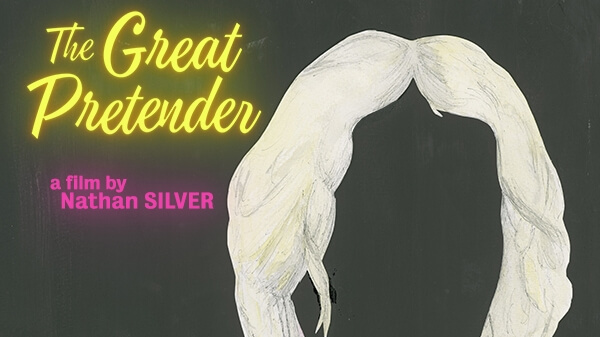Each of The Great Pretender’s four sections focuses on a different character: Mona (Maëlle Poesy-Guichard), a French playwright and director who is supposed to be rehearsing a play based on a recent breakup, but keeps rewriting the script to include her most recent conversations with her American ex; Chris (Keith Poulson), a horny doofus who keeps neglecting to tell the women he sleeps with that he has gonorrhea; Thérèse (Call Me By Your Name’s Esther Garrel), a spacey aspiring actress who makes Chris look like a model of self-awareness; and Nick (Linas Phillips), the aforementioned ex. In Mona’s play, Thérèse plays her stand-in and Chris—whose vapidity is defined by a shot of him frying eggs from a YouTube tutorial and by the line, “The sex was just too intense for her… She fell asleep”—plays Nick. They also end up sleeping with each other, and with each other’s respective real-life counterparts.
The bed-hopping (or, in some cases, couch-hopping) structure implies a sex farce, but the subject here is the mental roleplaying with which we address an often unfulfilling activity—represented here, in largely unflattering terms, by way of lackluster missionary plowing, an awkward alleyway tryst, and a pressure jet of ejaculate dodged with ninja-like reflexes. The characters of The Great Pretender all live in their own heads; the voice-over narration (first-person in Mona, Chris, and Thérèse’s sections, third-person in Nick’s, which is the longest) gives us a look inside. But they live in each other’s, too, in misconstrued versions. The Great Pretender has its share of dark punchlines, but its central concern is a sympathetic one: what we see in other people and how we would like to see ourselves.
Hopping through time and perspectives over the course of the movie’s brief 71 minutes, Silver never flags in his commitment to irony, artificiality, and merciless characterization. As in Thirst Street and the documentary hybrid Actor Martinez (co-directed with Mike Ott), he seems to locate the narrative in its disintegration and deformation; his rejection of realism reflects his characters’ rejection of reality. Working on a much more modest scale with a single 16mm zoom lens, the gifted cinematographer Sean Price Williams (Good Time) takes the woozy, thriller-chic aesthetic of his previous collaboration with Silver to its logical endpoint, shooting The Great Pretender through fog filters so thick that one sometimes barely makes out the contours of the actors’ faces. The haze mimics romantic delusion, or the state of being drunk or stoned, which the characters of The Great Pretenders frequently are. It’s also alienating and superficial—not unlike our own points of view.

